Why The Discovery Of Cleopatra’s Tomb Would Rewrite History
AncientPages.com - It couldn’t have been a case of better timing. Egyptologists celebrating the centenary of the discovery of the tomb of Tutankhamun now have a promising new archaeological discovery that appears to have been made in Egypt.
Excavators have discovered a tunnel under the Taposiris Magna temple, west of the ancient city of Alexandria, which they have suggested could lead to the tomb of Queen Cleopatra. Evidence that this is really the case remains to be seen, but such a discovery would be a major find, with the potential to rewrite what we know about Egypt’s most famous queen.
Relief of Cleopatra and her son Caesarion at the Dendera temple, Egypt. Credit: Olaf Tausch - CC BY 3.0
According to the ancient Greek writer Plutarch – who wrote a biography of Cleopatra’s husband, the Roman general Mark Antony, and is responsible for the lengthiest and most detailed account of the last days of Cleopatra’s reign – both Antony and Cleopatra were buried inside Cleopatra’s mausoleum.
According to Plutarch, on the day that Augustus and his Roman forces invaded Egypt and captured Alexandria, Antony fell on his sword, died in Cleopatra’s arms, and was then interred in the mausoleum. Two weeks later, Cleopatra went to the mausoleum to make offerings and pour libations, and took her own life in a way that is still unknown (a popular misconception is that she was bitten by an asp). She too was then interred in the mausoleum.
In the days that followed, Antony’s son Marcus Antonius Antyllus and Cleopatra’s son Ptolemy XV Caesar (also known as Caesarion, “Little Caesar”), were both murdered by Roman forces, and the two young men may likewise have been interred there.
If the mausoleum of Cleopatra has not already vanished beneath the waves of the Mediterranean along with most of the Hellenistic city of Alexandria, and is one day found, it would be an almost unprecedented archaeological discovery.
A discovery that could rewrite history
While the tombs of many famous historical rulers are still standing – the mausoleum of Augustus, Antony and Cleopatra’s mortal enemy, in Rome, is one example – their contents have often been looted and lost centuries ago.
One notable exception is the tomb of Philip II of Macedon, the father of Alexander the Great, uncovered at Vergina in the late 1970s. The tomb was found intact, and this has enabled decades of scientific investigation into its contents, advancing our knowledge of members of the Macedonian royal family and their court. The same would be true if Cleopatra’s tomb were discovered, and found to be intact.
The amount of new information Egyptologists, classicists, ancient historians, and archaeologists could glean from its contents would be immense. For the most part, our knowledge of Cleopatra and her reign comes from ancient Greek and Roman literary sources, written after her death and inherently hostile to the Egyptian queen. We do not have much evidence revealing the Egyptian perspective on Cleopatra, but what we do have, such as honorific reliefs on the temples that she built and votives dedicated by her subjects, gives us a very different view of her.
The ethics of unearthing Cleopatra’s remains
To date, no other Ptolemaic ruler’s tomb has been found. They were reportedly all situated in the palace quarter of Alexandria and are believed to be under the sea with the rest of that part of the city.
The architecture and material contents of the tomb alone would keep historians busy for decades, and provide unprecedented amounts of information about the Ptolemaic royal cult and the fusion of Macedonian and Egyptian culture. But if Cleopatra’s remains were there too, they could tell us a great deal more, including the cause of her death, her physical appearance, and even answer the thorny question of her race.
Mausoleum of Augustus. Credit: MumblerJamie - CC BY-SA 2.0
But should we be hoping to find Cleopatra’s remains, and to analyse them? From Tutankhamun to the ordinary ancient Egyptians whose mummies have been excavated over the centuries, there has been a long history of mismanagement and mistreatment.
While the days when mummies were unwrapped as a form of entertainment at Victorian dinner parties have thankfully passed, concerns are increasingly being raised by those who work in heritage about the appropriate treatment of our ancestors.
While the discovery of Cleopatra’s tomb would be priceless for Egyptologists and other scholars, is it fair to deny the queen the opportunity for peace and privacy in death that she did not receive in life?
Written by Jane Draycott, Lecturer, Classics, University of Glasgow
Provided by The Conversation
This article is republished from The Conversation under a Creative Commons license. Read the original article.
More From Ancient Pages
-
 Rome’s Most Wanted Enemy – Poison King Mithradates Murdered 80,000 Roman Civilians
Ancient History Facts | Dec 17, 2017
Rome’s Most Wanted Enemy – Poison King Mithradates Murdered 80,000 Roman Civilians
Ancient History Facts | Dec 17, 2017 -
 Unusual Archaeological Finds On Small Pacific Islands May Provide Evidence Of Intriguing Mythical Beings
Featured Stories | Oct 24, 2024
Unusual Archaeological Finds On Small Pacific Islands May Provide Evidence Of Intriguing Mythical Beings
Featured Stories | Oct 24, 2024 -
 Ancient Underground Tombs And Lightening God In Peru – Complex Concepts Of Death And Renewal Revealed
Archaeology | May 22, 2018
Ancient Underground Tombs And Lightening God In Peru – Complex Concepts Of Death And Renewal Revealed
Archaeology | May 22, 2018 -
 Home Of Jesus’ Apostles Found In The Lost Biblical Town Bethsaida
Archaeology | Aug 10, 2017
Home Of Jesus’ Apostles Found In The Lost Biblical Town Bethsaida
Archaeology | Aug 10, 2017 -
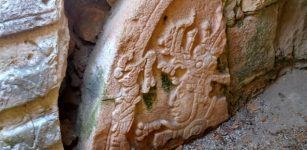 Dzibilchaltún: One Of The Most Ancient Mayan Centers In Northwest Yucatan, Mexico
Civilizations | Feb 2, 2016
Dzibilchaltún: One Of The Most Ancient Mayan Centers In Northwest Yucatan, Mexico
Civilizations | Feb 2, 2016 -
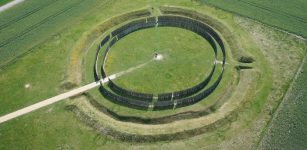 New Study: Middle Neolithic Circular Enclosure Of Goseck – Sacred Place And Astronomical Observatory
Archaeology | Aug 9, 2023
New Study: Middle Neolithic Circular Enclosure Of Goseck – Sacred Place And Astronomical Observatory
Archaeology | Aug 9, 2023 -
 Is Legendary Norumbega In North America A Lost Viking Settlement?
Featured Stories | Jan 8, 2021
Is Legendary Norumbega In North America A Lost Viking Settlement?
Featured Stories | Jan 8, 2021 -
 Beautiful Legend Of La Befana – Witch Who Delivers Gifts To Children In Italy On Epiphany – Twelve Days After Christmas
Featured Stories | Jan 6, 2025
Beautiful Legend Of La Befana – Witch Who Delivers Gifts To Children In Italy On Epiphany – Twelve Days After Christmas
Featured Stories | Jan 6, 2025 -
 Vikings’ Legacy Is Still Alive In Ireland – DNA, Ancient Ruins And Modern Cites Reveal
Civilizations | May 22, 2021
Vikings’ Legacy Is Still Alive In Ireland – DNA, Ancient Ruins And Modern Cites Reveal
Civilizations | May 22, 2021 -
 Secrets Of The ‘Worlds Of Prav, Nav And Yav’ Revealed – Ancient Slavic Wisdom Confirms The Multiverse Theory
Featured Stories | Oct 6, 2015
Secrets Of The ‘Worlds Of Prav, Nav And Yav’ Revealed – Ancient Slavic Wisdom Confirms The Multiverse Theory
Featured Stories | Oct 6, 2015 -
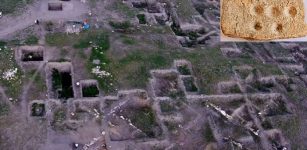 5,000-Year-Old Stone Paint Palette Unearthed In Küllüoba Mound
Archaeology | Sep 9, 2020
5,000-Year-Old Stone Paint Palette Unearthed In Küllüoba Mound
Archaeology | Sep 9, 2020 -
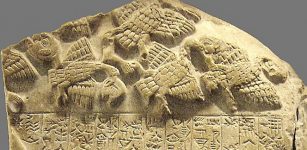 Sumerian Stele Of The Vultures: Oldest Known Historical Records Carved On Limestone
Featured Stories | Sep 1, 2016
Sumerian Stele Of The Vultures: Oldest Known Historical Records Carved On Limestone
Featured Stories | Sep 1, 2016 -
 On This Day In History: Dante Alighieri Famous For His ‘Divine Comedy’ Born – On May 9, 1265
News | May 9, 2016
On This Day In History: Dante Alighieri Famous For His ‘Divine Comedy’ Born – On May 9, 1265
News | May 9, 2016 -
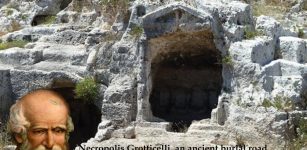 Archimedes From Syracuse – Master Of Science Whose Legacy Still Remains Powerful
Featured Stories | Sep 20, 2017
Archimedes From Syracuse – Master Of Science Whose Legacy Still Remains Powerful
Featured Stories | Sep 20, 2017 -
 Incredible Sedlec Ossuary – Church Of Bones Reveals More Gruesome Secrets
Archaeology | Dec 4, 2019
Incredible Sedlec Ossuary – Church Of Bones Reveals More Gruesome Secrets
Archaeology | Dec 4, 2019 -
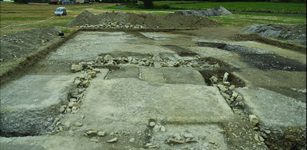 Stone Homes Of Europe’s First Megalithic Builders Discovered
Archaeology | Feb 22, 2023
Stone Homes Of Europe’s First Megalithic Builders Discovered
Archaeology | Feb 22, 2023 -
 Ancient Knowledge Of Levitation And Antigravity
Ancient Mysteries | Jan 24, 2016
Ancient Knowledge Of Levitation And Antigravity
Ancient Mysteries | Jan 24, 2016 -
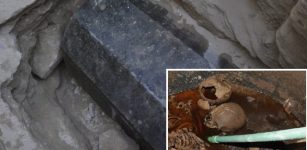 Thousands Want To Drink Red Liquid From The Granite Sarcophagus In Egypt
Archaeology | Jul 23, 2018
Thousands Want To Drink Red Liquid From The Granite Sarcophagus In Egypt
Archaeology | Jul 23, 2018 -
 Madagascar Hippos Were Forest Dwellers – New Study
Fossils | Jul 8, 2023
Madagascar Hippos Were Forest Dwellers – New Study
Fossils | Jul 8, 2023 -
 Rare Byzantine Gold Coin Discovered In Norway – Was It Brought By Harald Hardrada From Constantinople
Archaeology | Dec 12, 2023
Rare Byzantine Gold Coin Discovered In Norway – Was It Brought By Harald Hardrada From Constantinople
Archaeology | Dec 12, 2023


